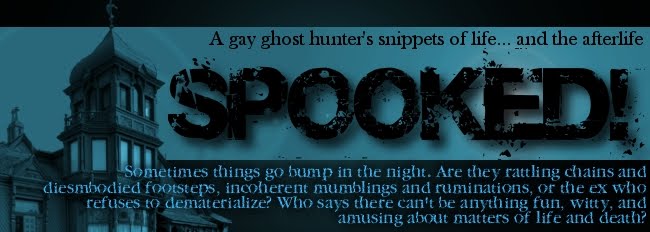You could say that I have a certain level of phasmophobia (fear of ghosts). I've been startled on more than one occasion during an investigation by something I cannot explain as 'of our natural known world.' That doesn't mean I haven't been terrified by mundane, comical reality though. A bat, boom of thunder, or a cat in the right circumstances have all made me jump. Then of course, there are some of you who are quite aware of my fear of heights (batophobia) and bridges (gephyrophobia) which has had some hilarious results.
I've heard that the best way to conquer fears is to face them. For the most part, I have, be it investigating haunted places, crossing high bridges in major cities, or looking out windows from skyscrapers. Yet there's one fear I've had since childhood (which, interestingly enough, is not a named phobia) which I have avoided at all costs... until now.
Skeletons.
In my early years, I experienced a recurring nightmare. I was in a narrow alley, with brick walls on three sides. On the fourth side, blocking my only means of escape, was a gang of several animated, grim, menacing skeletons slowly closing me into a corner before I woke up in a panic. Cartoon skeletons or illustrations don't bother me. It's the real (or at least life-like) skulls and skeletons that give me the creeps. Technically, this should be called "osteophobia" (quite literally 'fear of bones'), but the closest category for it is necrophobia: fear of death and dead things.
It sounds absurd, I know. They're inside all of us, so you would think something as common as a skeleton (while normally covered with flesh) wouldn't be such a big deal. But for me, it can be. But now, I get a chance to face this fear daily. In my effort to gather creepy, odd, and supernatural artifacts I now have a child-sized resin skull
To be honest, just glancing over at it is a bit unnerving at times. Even though it's not real, I can't bring myself to face those empty eye sockets in my general direction. I'm sure that in time, it will desensitize me enough that I won't be as uncomfortable in the presence of bones. It reminds me of a conversation from the movie Clue
"What are you afraid of? A fate worse than death?"
"No, just death. Isn't that enough?"
What is it about our immortality that is so frightening? Death is inevitable; no one can escape it. Yet it scares us and can become an obsession. Skulls are undoubtedly the strongest symbol of our limited life span. To gaze at a skull is to face your fate. If we know it's coming, why is the knowledge unbearable for many of us? Perhaps the answer is the unknown aspect. Is it a new beginning, the door to an afterlife, or just lights out? Yet the skull will not answer the question...























